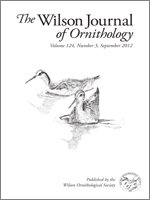We used visual observations of banded individuals and satellite telemetry from 2007 to 2011 on Hawai‘i Island to document movement patterns of the Hawaiian Goose (Branta sandvicensis), commonly known as Nēnē. Visual observations of numbered leg bands identified >19% and ≤10% of 323 geese at one of two breeding sites and one of two distant non-breeding areas during 2007–2011. We used satellite telemetry to document movement patterns of 10 male Nēnē from 2009 to 2011, and log-linear models to quantify the magnitude and individual differences in altitudinal migration. Two subpopulations of Nēnē moved 974.4 m (95% CI ± 22.0) and 226.4 m (95% CI ± 40.7) in elevation between seasons on average, from high-elevation shrublands during the non-breeding season of May–August, to lower-elevation breeding and molting areas in September–April. Traditional movement patterns were thought to be lost until recently, but the movement pattern we documented with satellite telemetry was similar to altitudinal migration described by early naturalists in Hawai‘i prior to the severe population decline of Nēnē in the 20th century.
How to translate text using browser tools
1 September 2012
Restoration of Movement Patterns of the Hawaiian Goose
Steven C. Hess,
Christina R. Leopold,
Kathleen Misajon,
Darcy Hu,
John J. Jeffrey
ACCESS THE FULL ARTICLE





